Road Fork
Recently, I have been discussing strategies with many companies facing a common decision point. Despite being widespread across the industry, they have all reached a level of success, no matter what their core product or offering is. And now, they are asking the same question. They are ready to expand beyond their current track, but they are unsure of what to do next.
The company lifecycle has something particularly appealing about this critical stage. Most people there may not realize they are actually at a fork in the road. Or if they do, they lack certainty about which path to choose. As a result, their heartfelt attempts to take the business to the next stage may rarely succeed.

At this fork, there are two different types of strategies to focus on. I call them Inbound Strategy and Outbound Strategy.
New Products
Each of the above companies has been successful with their core business and brand. Let's call it α (Alpha) because it is the initial established revenue line,

α is a certain product or service that fits the product market. Maybe it is still growing, or perhaps it has reached a growth plateau. And the company naturally says, "Let's expand into other areas. Let's build products related to the tangent." These can be called β (Beta), γ (Gamma), and so on.
If you are a SaaS (Software as a Service) company, I recommend offering additional software products β and γ to users. If you have a media brand with valuable IP for α, I recommend expanding to different but related IPs, β, γ.
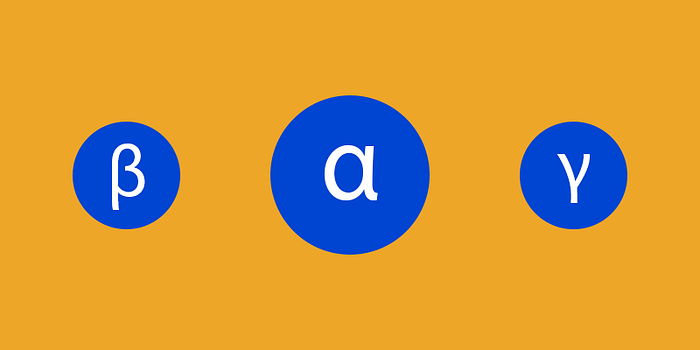
"Great," says the CEO. "Let's build these other product lines using existing brand equity. One of them is bound to catch up. And we are set." But that's not the case. Leadership is not identifying the most crucial part of the diagram. This is the direction of the arrows between the nodes. The road fork mentioned earlier is captured in this question. Are the arrows between these nodes pointing towards α or away from it? Which of these products is intended to nurture other products?
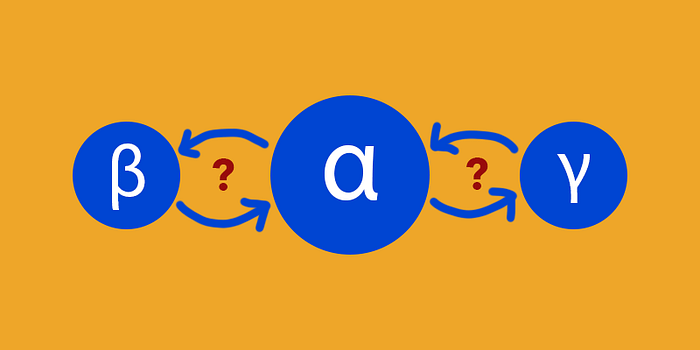
Inbound Strategy
The goal of Inbound Strategy is to supply growth to the existing machine (α). It assumes that there is continuous room for growth and helps establish new products (especially those that appeal to more consumers).
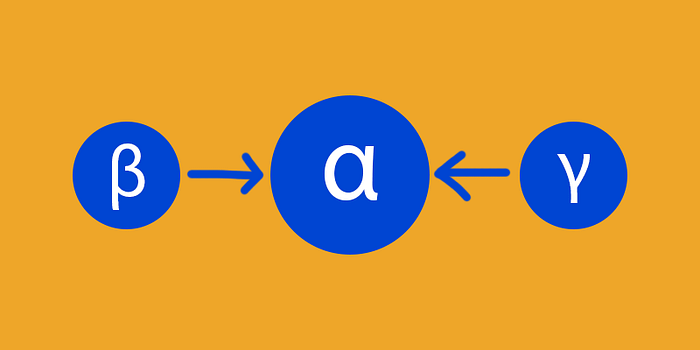
Another way to visualize Inbound Strategy is to think of them top-down, i.e., as funnels. I have written a lot about acquisition funnels and product funnels in the past (check out my articles on Funnel Laws and Blend Improvement for more).
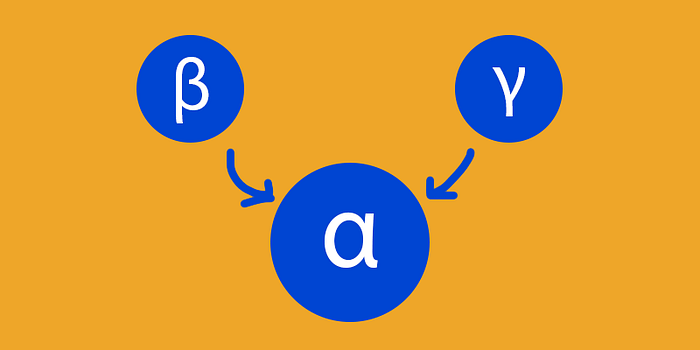
Why use the Inbound Strategy approach? Because you want to accelerate revenue growth from existing services.
You can think of many companies that have successfully acquired this approach. Take the example of the media space: look at The New York Times. Over the past 10 years, like all paid journalism, their core subscription product has faced significant growth hurdles amidst a surge of freely available digital news. It seemed that the number of individuals willing to pay for Times subscriptions was limited.
Yet over the past 10 years, The Times has brought in new audiences to consume tangent-related products like NYT Games, NYT Cooking, NYT Audio, expanding the top of the goal achievement process. They introduced a line of branded podcasts, with the most successful being The Daily. Each of these could be argued as attempts to build new revenue lines for the business (Outbound Strategy, details below). However, it would be challenging to prove that this nearly two-century-old news outlet, which has won more Pulitzer Prizes than any other newspaper, aims to dominate Sudoku or recipe games.
Instead, their actions indicate an Inbound Strategy, whereby they build peripheral products to attract new audiences who will eventually become core product subscribers. By persuading casual news readers to fund a highly addictive daily crossword habit, they significantly increase the likelihood of a final news subscription. They now have these new cohorts of daily listeners under the Times brand, with email and credit card on file, and a recurring opt-in communication channel to move them into the news subscription funnel. Similarly, a small percentage of each new cohort of daily listeners (albeit small) is eventually converted into Times subscribers. Next, podcasts serve as a business advertising revenue generator. Primarily, they are growth tactics for the core product.
(In short: I write articles like this every week. It provides a unique perspective on topics like business, technology, writing, and more. Consider clicking here to subscribe.)
Outbound Strategy
While Inbound Strategy aims to introduce new products to drive growth for Core 1, Outbound Strategy primarily seeks to spin up new revenue lines for these peripheral products.
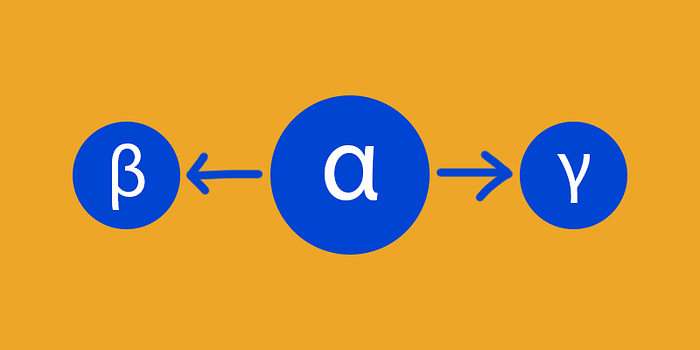
Established business lines with product market FIT have existing audiences to sell other products to. Ultimately, the cost of customer acquisition determines the rate and cost associated with the growth of new products. And what is a less expensive and less frictional way to acquire these new users than leveraging users already using another service you offer, who know (and likely trust) your brand?
Outbound Strategy reverses the above goal achievement process. Instead of promoting the growth of peripheral products (β and γ) to drive the growth of the hub (α), it currently promotes the growth of others.
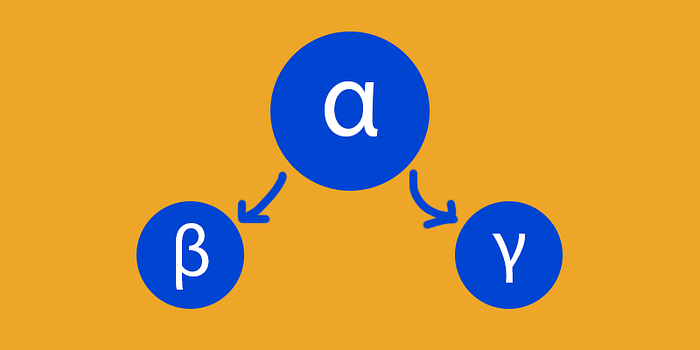
Why take an Outbound Strategy? Because you want to diversify revenue.
Which companies have successfully executed an Outbound Strategy? Clear examples include companies leveraging hardware distribution to sell software products (Apple being a typical example). However, a more intriguing case study is Amazon.
In 2022, Amazon brought in $200 billion in revenue through its online store. However, their revenue's constant share is now rapidly growing year-over-year due to other services. AWS brings in $8 billion annually (compared to just 1/10th seven years ago). Prime subscriptions bring in $35 billion (similarly about 1/10th six years ago).
This growth of products like Prime mainly does not promote new users on the net to make retail purchases at Amazon through an Inbound Strategy. How do we know? Because users appealed to Prime's first free shipping version (at least in 2005) are far ahead of casual users who have not yet used Amazon products. In other words, the core retail brand promotes the growth of peripheral Amazon products, not the core, as it helps with the growth of the funnel (especially with today's robust offerings). That is not the main purpose.
For this brand, which is now merely a peripheral node compared to the retail behemoth that was once Amazon's retail store, this series of Outbound Strategies has been very successful and is now the most profitable segment.
Intentional Decisions
While I have other examples of successful Inbound and Outbound Strategies, I have had many failures. When returning to previous stage companies and finding ways for leaders to leverage successful brands to expand the business, one thing is certain. When companies pursue both strategies simultaneously, it rarely works.
If you are at this inflection point, consider some of these thought starters to help determine whether you are embarking on the Inbound journey or the Outbound journey.
- Is your core offering benefiting from economies of scale? If yes, the Inbound Strategy will help push you towards more favorable economics over time. Consider that almost all of the costs are prepaid and can be amortized over a larger subscriber base. Each incremental subscriber for the Times, for example, not only brings revenue but also gradually increases margins as they are essentially brought in.
- Are your brand and core product considered two separate entities? If consumers can distinguish between the two, there may be enough brand equity to promote the growth of other products under the same umbrella through an Outbound Strategy. Think of brands like Microsoft (distinct from their initial product Windows), NPR (distinct from the many successful shows they have launched), Disney (you get the idea). These are all examples of companies that have reached new heights through an Outbound Strategy.
- Are you in a highly competitive space with little product differentiation? This can go either way. You can view this as a reason to pursue an Inbound Strategy (i.e., releasing products to support brand differentiation). Or, considering the existential risks of doubling down in a highly competitive field, you may see this as a reason to diversify revenue lines.
Regardless of the strategy resulting from this exercise, success cannot be achieved without intentionality. At this critical junction, resources need to be spent to point or indicate these arrows, but not both.
In the end, this is a road fork. And by trying to keep a foot on each of the two diverse paths, no one travels far.
(Know someone who would enjoy this article? Share it! And if you're not already a subscriber to my free weekly newsletter, consider clicking here to become one.)
